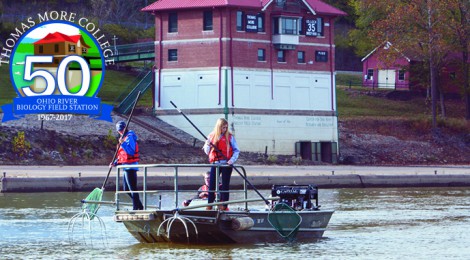
Biology Field Station 50 Years of River Research
The year was 1967 and Villa Madonna College was undergoing major changes. The move from Covington to Crestview Hills had begun, and soon the College would change its name to Thomas More. Another big event, though less well known, also occurred in 1967. The Biology Department, through a grant written by Sr. Mary Laurence and Fr. Herman Kamlage, with help from Professors Humphries and Volker, received 25 acres along the Ohio River in Campbell County, Ky., from the federal government. This property, which was a former U.S. Army Corps of Engineers Lock & Dam facility, became the Thomas More College Ohio River Biology Field Station. Since its humble beginnings in 1967, the Field Station has grown to become a premier research and teaching facility with its focus on the ecology of the Ohio River watershed and serves as a community resource for K-12 schools and the general public.
The Field Station is the only one of its kind operating on the banks of the entire 981-mile stretch of the Ohio River. Research began in 1971 when a group of students approached Duke Energy (then CG&E) about helping to support studies on the River. Duke has been supporting undergraduate research at the Field Station ever since. Today, undergraduate students conduct lab and field research projects in the areas of microbiology, water chemistry, fish surveys, biological assessments, and toxicology, among others. Each summer, the Field Station selects up to 12 of the brightest college students in the country through a highly competitive paid internship program. Roughly half of the internship slots are reserved for Thomas More College students, while the other openings are filled with students from major universities and colleges from around the country which have included Ithaca College in New York, the University of Florida, the University of North Carolina, University of California-Davis, and the University of Washington in Seattle, among others. Formal research collaborations exist with the U.S. Environmental Protection Agency and U.S. Fish & Wildlife Services. Both the Greater Cincinnati Water Works and the Northern Kentucky Water District utilize the facility for source water protection. Students interning at the Field Station each summer acquire research experience and, equally valuable, acquire connections to professional, working scientists.

Dr. Mike Waters ’94 stands next to the HABs Detection System. Dr. Waters developed the application to determine the algal community in the River based on photographs.
One such research collaboration between TMC, Northern Kentucky University, the USEPA, ORSANCO and the Foundation for Ohio River Education, is aimed at protecting the drinking water source for the Greater Cincinnati community. The Field Station has erected a monitoring device to detect blue-green algal blooms on the Ohio River. Similar systems are being deployed elsewhere in the River’s watershed. Dr. Mike Waters, a 1994 TMC alumnus and NKU mathematics professor, devised a way to monitor algal growth using a wireless camera, powered by the solar panel and a rechargeable battery. The camera snaps a photo every hour and transmits it to the Field Station’s website. Based on the pixels in the photo, an application, developed by Dr. Waters, determines the ratio of green to blue-green algae in the water.
When abundant, blue-green algae produces toxins harmful to humans and wildlife. In 2015, the Ohio River experienced a major blue-green algal bloom that spread from Huntington, W.Va., to Louisville, Ky., causing the states to issue health advisories. This project was implemented as a result of the 2015 incident and was put in place to alert local drinking water authorities of any potential health concerns associated with Ohio River water.
Dipping his hand into a large fiberglass trough, which circulates water from the Ohio River, Dr. Chris Lorentz, Director of the Field Station and the Environmental Science Program, pulls out a freshwater mussel to examine. “These are some of the crown jewels of biodiversity in our region and also serve as the canaries of the coal mine,” Lorentz explains, equating them to the small yellow birds that were once used to herald danger in the air of underground mines. Mussels can be the first indication of problems in the water, and this region of the country is home to more diverse species of mussels than anywhere in the world. The United States Fish & Wildlife Service is providing funding and technical support for the freshwater mussel research that is underway. It’s just one of the many research collaborations between the Field Station and other agencies. “We are partnering with the largest federal agencies doing environmental and field research,” Lorentz says proudly. “Through these collaborations and partnerships, our students have access to these experts which create unparalleled learning and networking opportunities. Apart from anything else, I’m most proud of the experiences we can offer our students and proud of what our graduates have gone on to accomplish.”

Spring field trip at the Biology Field Station with a class from Hughes STEM High School in Cincinnati.
While undergraduate research is the primary mission for the Field Station, STEM (Science, Technology, Engineering and Math) outreach to K-12 schools is a close second. The Field Station hosts over 1,000 visitors each year, including 500 children from grade school through high school. The younger children get “behind the scenes of nature,” according to Lorentz. “They can actually envision themselves as biologists and other scientists,” he says, adding, “The Field Station offers younger students an opportunity to learn more about their local environment and, as importantly, gives them an opportunity to see science in action.” Stomping through the muddy banks of the Ohio River, the students get a hands-on experience like no other. The high school students collect data and conduct experiments. While visiting the Field Station for daylong field trips or a weeklong summer camp, these students are immersed in the labs and in field research, generating a greater interest and understanding of the STEM fields. One student excitedly mentioned, “I thought the trip to the Field Station was pretty awesome! I wasn’t really sure what to expect coming into it but it definitely exceeded my expectations. I thought the whole place was pretty neat. From collecting fish and testing water to the community outreach I think this is the type of place people need to see.” Through Thomas More College’s STEM Initiatives (TSI) program, funded initially by the Toyota USA Foundation and more recently by the DUKE Energy Foundation, the Field Station and other departments on campus offer a comprehensive, yearlong program of workshops, field trips, and camps. Faculty also expanded the program to include activities in the Arts, Reading, Writing and Ethics, taking TSI from STEM to STREAM! Last year, the Field Station was recognized as one of four field stations in the country with Best Management Practices in STEM Education, putting it in the company of Harvard University, Michigan State University, and Oregon State University.

FISHING BADGE EARNED! American Heritage Girls of NKY had a fun evening of activities on fish diversity and fishing techniques. A hands-on approach encourages enthusiasm, engagement, and excitement when learning about the Ohio River ecosystem.
With the success of both the research and STEM outreach programs, Lorentz faces a unique challenge. “Our ability to meet the growing demands for outreach and research is maxed out,” Lorentz admits. “We have hit the proverbial ceiling.” Currently, there’s a waiting list for summer camps and grade school field trips and some schools are prevented from visiting the Field Station, particularly those with large class sizes. Additional classroom space is necessary to continue serving the K-12 community. Lorentz points to a rundown storage shed that sits to the left of the converted lock house which is the main research building. “Over there, that’s where we will build the new STEM outreach center,” Lorentz states. He continues, “It will have classrooms, high-tech educational features, and as many large windows overlooking the river as possible.” This new building will provide space for hundreds of additional students to come each year for school field trips and allows for increasing the number of research projects that could take place in the Field Station, e.g. expansion of the fresh water mussel research.
“I have been fortunate to carry the torch passed on to me from my predecessors and build on the foundation they began in 1967,” Lorentz states. “Beginning with Sr. Mary Laurence, the founder and first Director of the Field Station, to Dr. John Hageman, Director from 1991-2000, and numerous other faculty, including Professors Fred Humphries, Bill Volker, Bill Bryant and John Ferner, these people were visionaries about the potential of the Field Station. I’m standing on their shoulders and those of countless students, as we carry out the mission of education, engagement and empowerment around the Ohio River.” Lorentz, who has recently been elected as Vice President of the international Organization of Biological Field Stations, a group of 250 such facilities worldwide, says field stations play a critical role in research and STEM education. “Like no other, Field Stations offer a unique living and learning environment that can meet the challenges of a rapidly changing environment and the need to produce the next generation of STEM professionals.” It is his hope that the observance of the 50th anniversary of the Field Station raises the awareness and recognition necessary to secure funding to expand the facilities and strengthen the programs for the next 50 years.
Keep up with the latest activities at the Biology Field Station by following them on Facebook (facebook.com/TMCFieldStation) or twitter (twitter.com/tmcbio).
Click here for a list of activities that celebrate the 50th Anniversary.
_____________________
A Brief History:
1967 – The College enters into a 30-year lease with the federal government to transform the former lock & dam facility into a Biology Field Station. This was made possible through a grant written by Sr. Mary Laurence and Fr. Herm Kamlage, along with biology professors Fred Humphries and Bill Volcker. Sr. Mary Laurence becomes the first Director of the Field Station and serves in this capacity from 1967-1991.
1971 – The Cincinnati Gas and Electric Company (now Duke Energy) provides the first funding for undergraduate research at the Station, marking the company’s ongoing support of TMC. The project, initiated by TMC students, entailed study of the fish population and water chemistry of the River around Beckjord Power Plant.
1970s-1990s – TMC professors, including Drs. Bill Bryant and John Ferner, offer summer programs that include teacher workshops, field trips and research projects.
1991 – Dr. John Hagman takes over as the second Field Station Director.
1996 – The College receives a major grant from the James Graham Brown Foundation to renovate the former lockhouse into classrooms and laboratories.
1997 – On March 10, 1997, a representative from the federal government visits the Field Station to turn over the property outright to the College at the completion of the original 30-year lease agreement.
1997-1998 – The former lockhouse is renovated, receiving a complete overhaul of the interior, creating space for future research labs and classrooms.
2000 – Dr. Chris Lorentz becomes the third and current Field Station Director.
2005 – The Field Station enters into a formal collaboration with the United States Environmental Protection Agency for the protection of the Ohio River as a drinking water source for the Greater Cincinnati area, as the Field Station grows from a seasonal facility to a year-round research and outreach center.
2011 – The College completes a major capital campaign for the Field Station, raising over $1.5M to construct a state-of-the-art, LEED-certified conference center and expand the outreach programs.
The Sister Mary Laurence Outdoor Classroom and Interpretive Nature Trail are established and dedicated.
2012 – The Field Station establishes TSI (Thomas More College STEM Initiatives) –— a year-long STEM outreach program for high school teachers and students, funded through a generous grant by the Toyota USA Foundation.
2015 – The Duke Energy Foundation grants the Field Station $250,000 for water quality research and STEM outreach.
2017 – 50th Anniversary Celebration with introduction of Friends of the Field Station giving society.
Enjoy the gallery of early photos of the Biology Field Station, for newer photos please click here to visit the Field Station’s Facebook page.




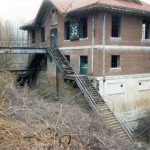

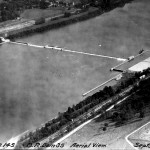

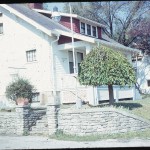
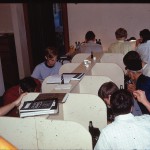
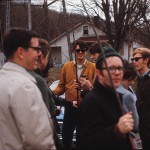
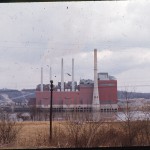
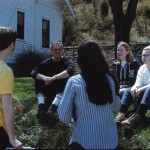
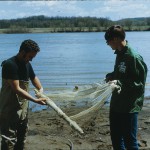
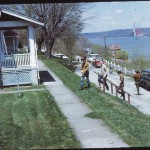
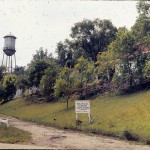
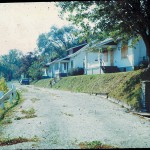
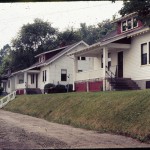
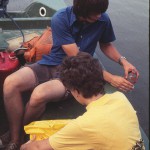

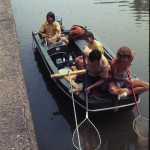
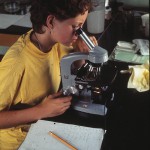
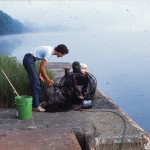
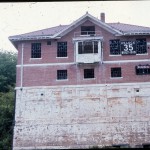

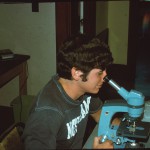
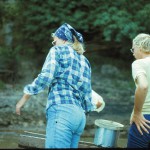
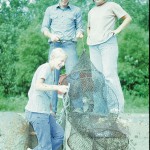
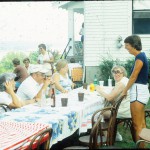
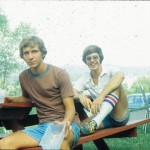

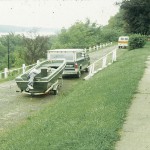
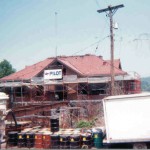
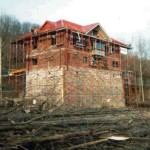

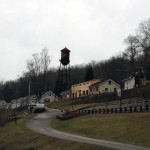
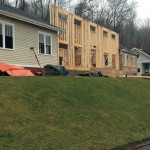
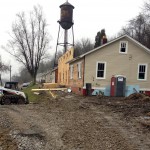
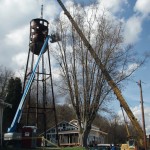

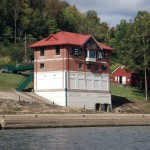
Comments are closed, but trackbacks and pingbacks are open.